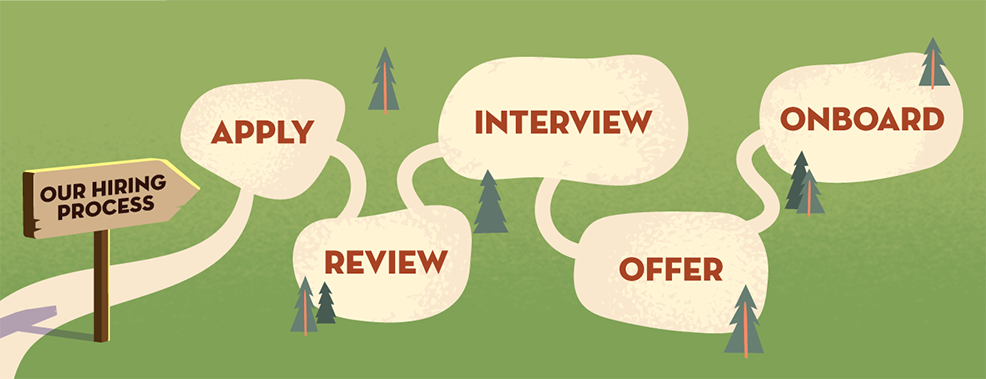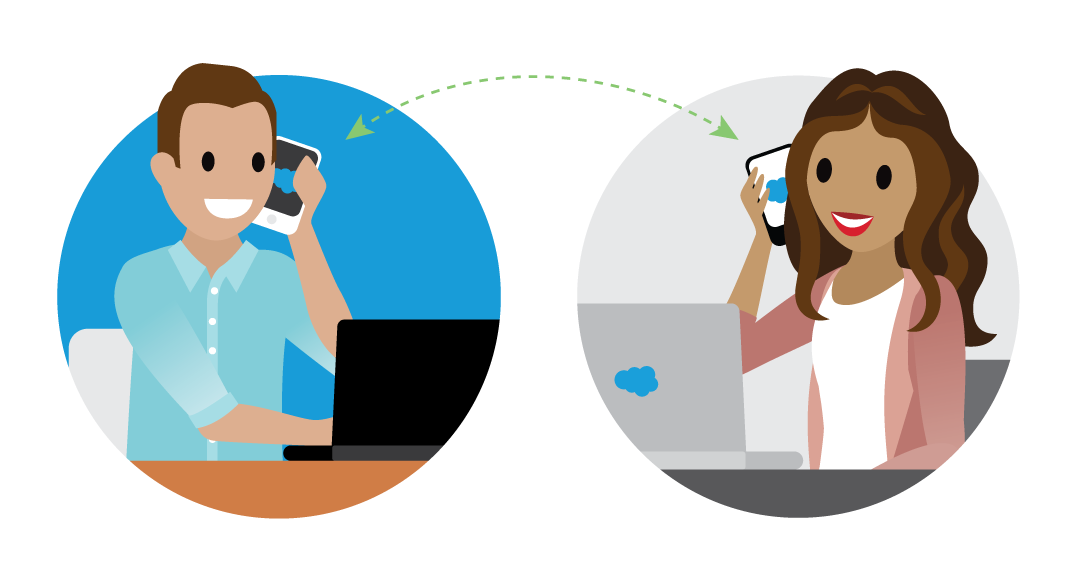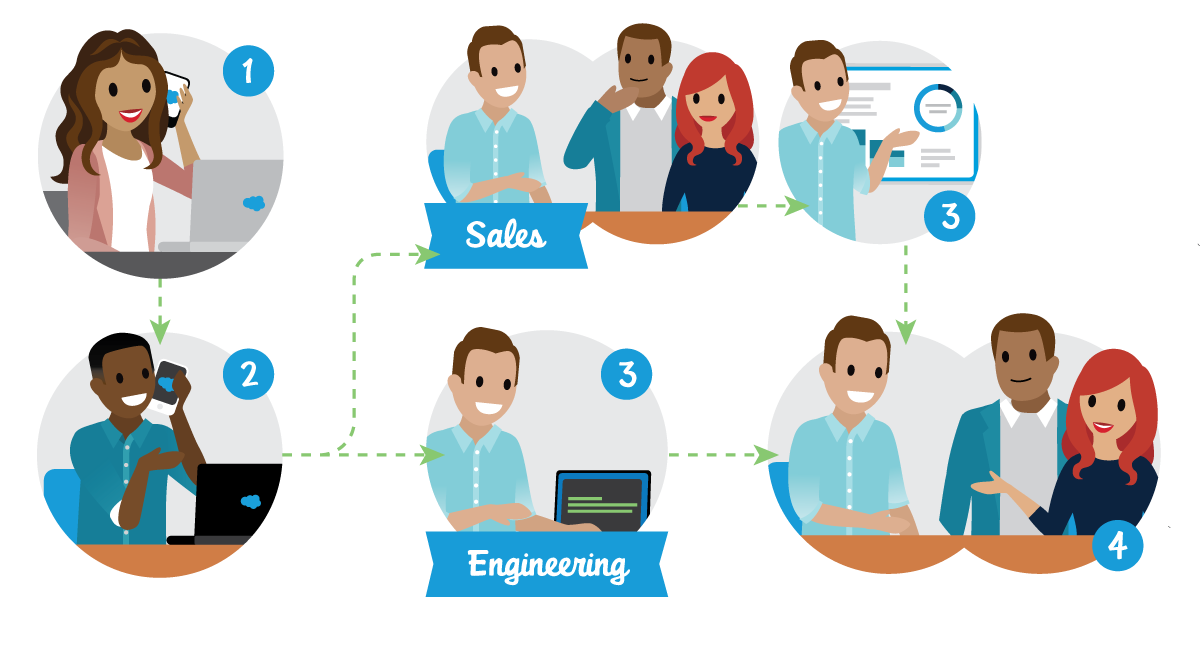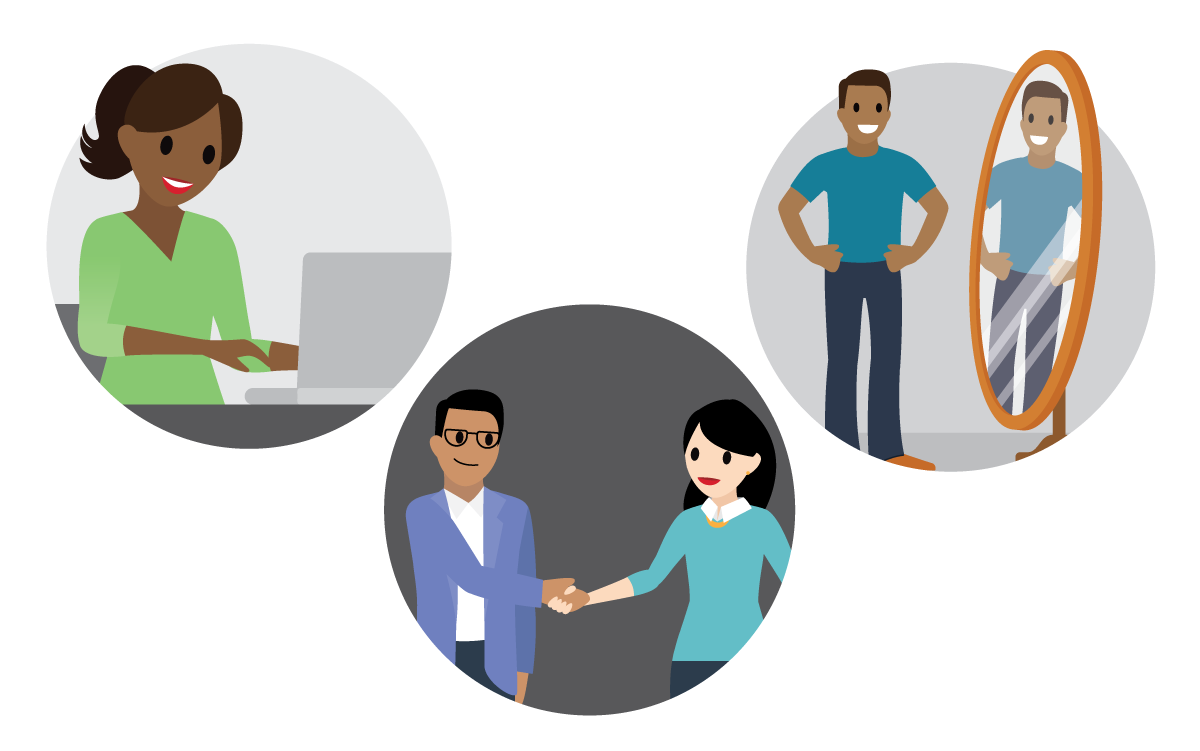Discover How Culture Guides Our Hiring Process
Learning Objectives
After completing this unit, you’ll be able to:
- Navigate the hiring process at Salesforce.
- Prepare for your Salesforce interview.
Becoming Salesforce
At Salesforce, our core values help shape our culture and guide us in everything we do—hiring too! From screening applicants to welcoming you onto our team from Day 1, we rely on our core values of trust, customer success, innovation, equality, and sustainability to inform our hiring process and ensure consistency across our organization.
When it comes to recruiting and hiring, we lead with our values and focus on your skills and competencies. According to Nathalie Scardino, head of recruiting at Salesforce, it’s this focus on competencies that sets Salesforce apart. We look for culture “adds,” not culture “fits.” This is one of the principles in our Inclusive Hiring Process, which helps ensure you are evaluated on the core competencies of the role and not on your personality traits. It provides an opportunity for you to demonstrate your relevant skills and helps you experience the fairest process possible.
Additionally, all of our recruiters, hiring managers, and interviewers are trained on our five core principles of inclusive hiring.
- We seek to hire the most qualified candidate for the job.
- We strive to have a candidate pool that reflects our communities.
- We work to have fair and equitable hiring processes.
- We map candidates to core competencies and our values, not culture fit.
- We lead with equality and values in the interview experience.
We apply these inclusive hiring principles to every stage of our hiring process—apply, review, interview, offer, and onboard. Let’s break down each stage at a high-level.

Apply—Calling All Trailblazers
We’re always searching for top talent whose values align with our company values. Sound like you? Get started by searching for jobs posted on our job board.
While many candidates search for jobs on their own or are contacted by a recruiter, we also have an Employee Referral Program. In fact, it’s our number one source for new hires. So leverage your contacts at Salesforce. They can help you navigate our job openings and find the best roles to apply for based on your skills and experience.
Find a job that sounds like a good fit for you? Here are some tips to keep in mind before you apply.
- Match your skills and interests to jobs you’re excited about and the problems you want to solve.
- Try to be consistent and true to your experience and the requirements listed in the job description.
- Focus on your resume and how you frame your achievements.
- Add a referral from a current Salesforce employee (with permission). Having a referral in your application boosts your chances of hire.
Review—Make a Match
Once you submit your application, it is logged in our applicant tracking system and routed to our expert team of recruiters. If you’re a match (or match for another role), our recruiters will schedule a call to learn more about your skills and experience.

Interview—Give Us Your Pitch
If you land an interview, it’s time to show how you’re not just good on paper, but GREAT in real life. To help minimize unconscious bias and ensure that we hire people who will thrive in our environment, we train our hiring managers to conduct competency-based interviews.
With competency-based interviews, we ask candidates to describe a past work project, the scale of the project, what type of collaboration was involved, and the project outcomes. Competency-based interview questions sound something like, “Describe a time when…” and “Share an example of a time when…”
To prepare to answer these types of competency-based questions, it’s a good idea to brainstorm scenarios and specific examples related to your past experiences ahead of time. Check out the Resources section at the end of this unit for interview resources specific to your role.
No matter your role, if you move forward you can expect to have multiple interviews with various stakeholders. That way you can get a solid view of the organization, your role, and your responsibilities.
Here’s an example of what your interview process might look like.
The first step is a phone screen from one of our recruiters (1). Next up, a phone interview with a hiring manager (2). Then if all goes well, it’s time for the role-specific stage (3). If you’re applying for a Sales role, this includes a team interview and a presentation. If you’re applying for an Engineering role, this includes a programming test. The last step in the interview process is a final interview (4).

Now that you know what to expect, it’s time to take action. Let’s explore some of the things you can do to prepare for your interviews and set yourself up for success.
Ace Your Interview
Keep in mind that the interview process is different across Salesforce. Still, there are some universal things that you can do to prepare. Here are some tips to prepare for your interview.
- Review our Candidate Resources—they should help answer many of the questions you may have.
- Take a look at our YouTube Channel and view a few videos to stay up-to-date on all the latest happenings and events at Salesforce.
- Check out a few customer success stories—they can be filtered by products, industry, and customer size. Don’t forget to share what resonates with you with the team during your interview!
- Dig deeper with Trailhead. If you’re interviewing for a specific product team or just want to strengthen your Salesforce knowledge, leverage Trailhead to learn more (but we don’t expect you to be an expert!).
- Read the job description carefully and prepare to share how your experience ties back to the responsibilities of the role.
- Check out your interviewer(s) on LinkedIn. According to Glassdoor, doing some research on your interviewer on LinkedIn can help you learn your interviewer’s background, their role at the company, and even some common interests you both share.
- Get clear about your motivations. Why do you want to work at Salesforce?
- Brush up on your video interview etiquette. If you’re interviewing via webcam, it’s important to test your audio, video, and Internet connection before your interview. And don’t forget to find a distraction-free setting—keep it professional!
- Remember to practice. Practice answering interview questions out loud. Ask a friend or family member to help you play out possible scenarios.
Once you do your prep work and research, it’s time to focus on your delivery.
Think of your interview as your time to share your story. It’s your chance to help us get to know the hard-working, talented, and innovative person that you are.

Haven’t interviewed in a while? Not to worry, we’ve got you covered. Here are some ways to shine during your interview:
- Be a great storyteller. Relate a story to the job or use data in your story if relevant.
- Keep your answers clear and concise. Try the STAR interview response strategy. It stands for Situation, Task, Action, Result and it’s especially helpful for answering those competency-based questions we focus on.
- Tell us about yourself. In addition to your skills and previous work experience, we also want to learn about your passions outside of work and how you align with our values and culture.
- Dress for the role you want. It’s important to put your best foot forward. According to the balance careers, your interviewer’s first impression is often a lasting one. Dress in what makes you comfortable and makes sense for the position you’re interested in. When in doubt, ask your recruiter.
- Be curious. Ask questions and demonstrate genuine curiosity. What can we tell you about the role that you might not have learned yet?
Next Steps: Offer and Onboarding
Does the Hiring Team want to move forward? Congrats, you're one step closer. The next step in the hiring process is that all-important offer.
If you’re selected, and the fit and timing are right for you, your recruiter will walk you through the proposed details of the offer. If you accept, we’ll provide all the information you need to get started.
To ensure a smooth transition, we onboard all of our employees and provide resources and support to help you succeed.
If At First You Don’t Succeed...
We know how competitive it is out there. If you’re not selected for the role this time around, that’s OK! We encourage you to apply for other Salesforce opportunities that interest you. We have many employees who previously applied and interviewed for a position before landing their current job at Salesforce. In the meantime, as you gain new experiences or skills please stay in touch and apply again.
Let’s Sum It Up
At Salesforce, our unique culture is what sets us apart. To ensure that we continually improve our day-to-day employee experience and build our culture, we’re thoughtful about the way we hire and do our best to create a great candidate experience that helps you thrive personally and professionally.
Ready to take the next steps? Check out the other modules in this Trail to help you prepare for a specific role at Salesforce.
Resources
- External Site: Salesforce's secrets to it's recruiting success
- Site: Our Hiring Process
- Trailhead: Inclusive Hiring Practices
- External Site: Salesforce YouTube Channel
- Site: Customer Success Stories
- External Site: 7 Things to Research Before Any Job Interview
- External Site: 8 tips for your next video job interview
- External Site: Tips for Dressing for Job Interview Success
- External Site: 21 Job Interview Tips: How to Make a Great Impression
- External Site: How to Use the STAR Interview Response Technique
